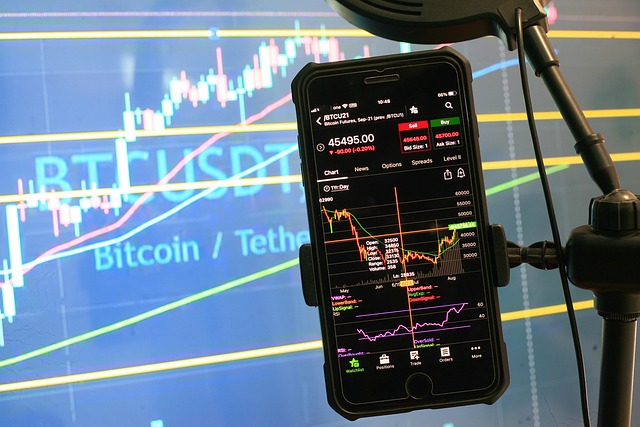Bitcoin Trading Strategy for Beginners 2025 Guide
Author: Jameson Richman Expert
Published On: 2025-10-29
Prepared by Jameson Richman and our team of experts with over a decade of experience in cryptocurrency and digital asset analysis. Learn more about us.
Bitcoin trading strategy for beginners — this guide summarizes the essential concepts, tools, and step-by-step tactics you need to trade Bitcoin confidently in 2025. You’ll learn foundational market mechanics, proven strategies (DCA, swing trading, trend-following, breakout), risk management formulas, example trades, platform setup, and the resources to continue learning. Practical checklists and links to trusted tools, exchanges, and troubleshooting guides are included to help you move from theory to practice safely.

Why a focused strategy matters for beginners
Bitcoin (BTC) is volatile, 24/7, and driven by macro events, on-chain metrics, and trader psychology. A clear strategy helps beginners avoid emotional mistakes, preserve capital, and steadily build experience. Google’s algorithms and modern SEO reward content that demonstrates expertise, authoritativeness, and trustworthiness (E-A-T). That same principle should guide your trading: rely on verified data, structured plans, and disciplined execution.
Quick overview: what you’ll learn
- Core principles of Bitcoin trading and market structure
- Step-by-step setup: accounts, wallets, security
- Entry/exit tactics and risk management (position sizing, stop loss, take profit)
- Beginner-friendly strategies with examples
- Tools, charts, alerts, and troubleshooting resources
- Common mistakes and a beginner’s checklist
Foundations: How Bitcoin markets work
Bitcoin trades on centralized exchanges (CEXs) and decentralized venues (DEXs). Price discovery depends on order books—buyers (bids) and sellers (asks)—and liquidity. Institutional flows, macro news, regulatory updates, and on-chain metrics (transactions, supply distribution) can cause sharp moves. For a concise history and technical background on Bitcoin, see the Wikipedia entry on Bitcoin for an authoritative primer.
Beginners should distinguish between:
- Spot trading: Buying/selling the actual asset (BTC).
- Derivatives trading: Futures, perpetual swaps, and leverage (higher risk).
- Market making and liquidity: Advanced topics not recommended for beginners.

Set up safely: accounts, wallets, and verification
Before you trade, take 30–60 minutes to create accounts and secure them.
- Choose a primary exchange — reputable exchanges provide liquidity and security. You can register on major platforms such as Binance (create an account here), MEXC (sign up via this invite), Bitget (referral), or Bybit (referral). These links allow you to open verified exchange accounts quickly.
- Enable two-factor authentication (2FA) on every exchange account and email.
- Use a hardware wallet (Ledger or Trezor) for long-term BTC holdings instead of leaving everything on an exchange.
- Complete KYC and small deposit verification—this speeds withdrawals and reduces friction when you need to move funds.
Mobile trading and platform resources
If you prefer trading from your phone, there are step-by-step mobile guides to familiarize yourself with app features and order types. For a complete mobile trading walkthrough tailored to Binance, see this comprehensive Binance mobile trading guide. For social trading and copy-trading users, the MEXC copy trading app guide explains 2025 features and how to mirror experienced traders. If you’re in Canada and looking for trusted apps to buy crypto, this roundup of top Canadian crypto apps compares fees and security.
Basic trading concepts every beginner must know
- Bid / Ask / Spread: The bid is the highest buy order; the ask is the lowest sell order. Spread is the difference and affects trading costs.
- Order Types: Market (instant), Limit (price-specific), Stop (triggered), and OCO (one cancels the other).
- Leverage: Amplifies gains and losses. Avoid or use very small leverage until experienced.
- Liquidity: High liquidity means tighter spreads; low liquidity increases slippage risk.
- Slippage: The difference between expected price and executed price, especially relevant during fast moves.
Risk management: trade like a pro
Capital preservation is the cornerstone of any long-term strategy. Apply these rules consistently:
- Never risk more than 1–2% of your trading capital on a single trade. Use position sizing formulas to compute the exact amount. For example, with $5,000 account and 1% risk, your maximum loss per trade = $50.
- Determine stop loss before entry. Use technical levels (support/resistance) or volatility-based measures (ATR).
- Use a risk/reward ratio of at least 1:2. If stop loss is $100, aim for at least $200 take profit.
- Diversify position sizes and avoid concentrating all capital into one highly-levered trade.
Position sizing formula (simple)
Position Size = (Account Size × Risk per Trade) / (Entry Price − Stop Loss Price)
Example: Account = $5,000. Risk = 1% = $50. Entry = $50,000 BTC. Stop loss = $49,000 (difference $1,000). Position size in BTC = $50 / $1,000 = 0.05 BTC.

Technical analysis basics for beginners
Technical analysis (TA) is the most common toolset for traders. Learn chart reading and a few core indicators first—don’t overload yourself.
- Support and Resistance: Horizontal price levels where buyers/sellers historically step in.
- Moving Averages (MA): 20, 50, 200-day MAs show trend and dynamic support/resistance.
- Relative Strength Index (RSI): Momentum oscillator; values above 70 often show overbought, below 30 oversold.
- MACD: Trend-following momentum; watch for crossovers and divergence.
- Volume: Confirms price moves; rising price with rising volume is stronger.
Start with a clean chart on TradingView and practice drawing trendlines and identifying chart patterns like triangles, flags, and head-and-shoulders. If you use alerts and find they fail, this TradingView alerts troubleshooting guide can help you fix common alert issues.
Beginner-friendly Bitcoin trading strategies
Below are practical, lower-risk strategies suitable for someone starting out. Each includes objectives, required time commitment, pros and cons, and an example trade.
1) Dollar-Cost Averaging (DCA)
What it is: Buying a fixed dollar amount of Bitcoin at regular intervals (daily/weekly/monthly) regardless of price.
Time commitment: Low.
Pros: Reduces timing risk, removes emotion, good for long-term accumulation.
Cons: Less upside in strong bull runs versus lump-sum buys; requires discipline.
Example: Invest $200 weekly into BTC via an exchange or recurring purchase feature. Over 12 months, you smooth out volatility and potentially lower average cost.
2) Swing Trading
What it is: Capturing multi-day to multi-week price moves using trend and momentum indicators.
Time commitment: Medium (daily chart monitoring).
Pros: Lower stress than day trading; allows more confirmation of setups.
Cons: Requires understanding of technical levels and patience.
Example setup:
- Wait for price to bounce off the 50-day MA and RSI to be between 40–60.
- Enter on a bullish candlestick close above a recent swing high.
- Place stop loss below the swing low and target a 2:1 R:R.
3) Trend-Following
What it is: Riding longer-term trends and using moving average crossovers or price above/below MAs as signals.
Time commitment: Low–medium.
Pros: Simple rules, effective in sustained trends.
Cons: Produces false signals in choppy markets.
Example: Use 20-day and 50-day EMA. When 20 EMA crosses above 50 EMA and price is above both, consider entering a long with stop loss below 50 EMA.
4) Breakout Trading
What it is: Entering trades when price breaks a defined resistance level or a consolidation pattern.
Time commitment: Medium; requires monitoring and fast entries.
Pros: Captures strong momentum moves.
Cons: High false-breakout rate; needs confirmation (volume, retest).
Example:
- Identify a horizontal resistance at $60k after price consolidates.
- Enter on close above $60k with volume above the last average. Place stop loss below breakout candle or recent support.
5) Scalping (Advanced beginners only)
What it is: Short intraday trades capturing small price moves.
Time commitment: High; requires fast execution and low fees.
Pros: Many small wins can compound; less exposure to overnight risk.
Cons: Transaction costs, taxes, and emotional strain. Not recommended for most beginners.
Combining strategies into a beginner trading plan
Create a simple, written trading plan and follow it. Example plan for a beginner with $5,000 starting capital:
- Allocation: 60% for DCA/hold (long-term), 30% for swing/trend trades, 10% cash reserve.
- Risk per trade: 1% of account on swing trades.
- Tools: TradingView for charts, exchange A for execution (Binance link), exchange B for copy-trading (MEXC link).
- Check schedule: Review charts daily for swing setups; keep alerts set for key levels.

Practical examples with numbers
Example swing trade — step-by-step:
- Account size: $5,000. Risk per trade: 1% = $50.
- Identify entry: BTC price = $55,000. Stop loss set at $53,500 (loss = $1,500 per BTC).
- Position size calculation: $50 / $1,500 = 0.0333 BTC.
- Take profit target (2:1): $55,000 + (2 × $1,500) = $58,000.
- If BTC reaches $58,000, profit per BTC = $3,000. Position 0.0333 × $3,000 = $100 profit (~2% of account).
This example shows conservative sizing; the goal is small consistent gains and capital preservation.
Indicators and combinations that work well for beginners
Avoid indicator overload. Choose a primary trend indicator, a momentum filter, and a volume/confirmation tool.
- Trend: 50 EMA or 200 MA to identify overall bias.
- Momentum: RSI (14) tuned to detect strength/weakness.
- Confirmation: Volume or On-Balance Volume (OBV).
Using charts and alerts effectively
Set alerts for price crossing key levels, moving average crossovers, and RSI extremes. If alerts ever stop working, consult troubleshooting resources — here is a complete guide to fixing TradingView alerts that helps resolve common issues and ensures you don’t miss critical signals.

Fundamental analysis and on-chain metrics
While TA handles price structure, fundamentals explain why moves happen. Key fundamentals to watch:
- Macro: Interest rate decisions, USD strength, inflation data.
- Regulation: Major regulatory announcements from agencies (see the SEC investor alerts for official guidance).
- On-chain: Exchange inflows/outflows, active addresses, and large wallet movements.
- Supply events: Halvings and miner behavior can shift longer-term supply/demand.
Combine fundamentals with TA to avoid fighting major macro trends.
Taxes, reporting, and legal considerations
Cryptocurrency taxes differ by jurisdiction. In the U.S., the IRS has guidance on virtual currency transactions. Learn local tax rules and keep trading records. Ignoring taxes creates future legal and financial risk.
Common beginner mistakes and how to avoid them
- Overtrading: Stick to your plan—fewer high-quality trades beat many low-quality ones.
- No stop loss: Always define risk for every trade.
- Excess leverage: Can wipe accounts quickly—start with no leverage or minimal leverage.
- Poor security: Use 2FA and hardware wallets for savings balance; don’t store all funds on exchanges.
- Ignoring fees: Trading fees and spreads eat returns; pick the right exchange and account type for your style.

Tools, resources, and educational links
Recommended tools to speed learning and execution:
- Charting: TradingView (for chart setups and alerts)
- News: CoinDesk, Cointelegraph, and mainstream financial sites
- On-chain: Glassnode, CryptoQuant (begin with free metrics)
- Educational: Investopedia’s trading and risk management articles provide foundational knowledge on trading concepts.
Additional guides and practical resources:
- How to use the Binance app — complete mobile trading guide
- MEXC copy trading app 2025 — the ultimate guide to cryptocurrency social trading
- Top apps to buy crypto in Canada (fees and security comparison)
- Fixing TradingView alerts — complete troubleshooting guide
Where to practice: demo accounts and low-risk entry
Practice on demo or paper trading accounts before committing real capital. Most exchanges and chart platforms offer either simulated trading or allow tiny order sizes for low-cost practice. When ready, deposit a small amount and execute micro-trades to confirm your processes and psychology.
Checklist: daily and weekly routine for beginners
- Check macro calendar (economic events) and major crypto news.
- Review open positions and ensure stop losses are in place.
- Scan top 3–5 timeframes (daily, 4H, 1H) for trend and pattern confirmations.
- Set alerts for key levels and potential breakout zones.
- Log every trade: entry, exit, size, rationale, and outcome (learning compounding wins).

Frequently asked practical questions
How much capital do I need to start trading Bitcoin?
You can start with a few hundred dollars, but meaningful trading results and risk diversification become easier with larger capital. Start small, use proper position sizing, and grow your size as you gain consistent wins.
Should I use leverage as a beginner?
No. Leverage increases both gains and losses. Start with spot trading and move to leverage only after mastering risk management on unlevered trades.
How long to become consistently profitable?
There’s no fixed timeline. Many traders reach consistency in months to years, depending on discipline, learning speed, and market conditions. Focus on process and journaling rather than fast profits.
Final checklist before your first funded trade
- Exchange account set up and 2FA enabled (Binance, MEXC, Bitget, Bybit links)
- Clear written trade plan with entry, stop, and target
- Position size calculated with risk under 1–2%
- Trade logged and rules for exit/adjustment defined
- Tax and record-keeping plan established
Conclusion — start small, learn constantly
Bitcoin trading strategy for beginners in 2025 is about discipline, a clear plan, and continuous learning. Use the strategies above to build experience slowly. Protect your capital with disciplined risk management and practice using demo environments. Leverage high-quality resources—educational guides, trading platforms, and on-chain analytics—and avoid shortcuts like excessive leverage or ignoring taxes.
Further practical reading and tools mentioned in this article:
- Binance registration (open an account to practice trading): Create a Binance account
- MEXC copy trading app (social trading guide): Join MEXC
- Bitget referral (registration link): Register on Bitget
- Bybit referral (registration link): Register on Bybit
- Binance mobile trading guide for step-by-step app walkthrough: Complete Binance mobile trading guide
- MEXC copy trading and social trading guide 2025: MEXC copy trading app 2025 guide
- Top apps to buy crypto in Canada (fees/security): Top crypto apps in Canada
- Fix TradingView alerts if they stop working: Fix TradingView alerts guide
- Authoritative reference on Bitcoin: Bitcoin — Wikipedia
- Trading and market education: Investopedia
- Official regulatory guidance: SEC Investor Alerts and Bulletins
- US tax guidance on virtual currency: IRS — Virtual Currency Guidance
Start small, protect your downside, document every trade, and iterate your strategy as you gain data and experience. Good luck — trade responsibly.